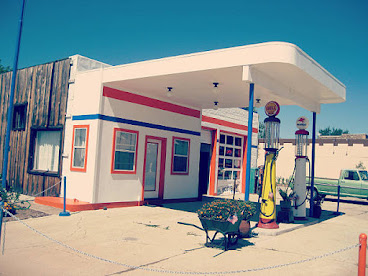Why gas station owners love low oil prices - Mina Gorgos
NEW YORK - So you think you are finally getting one over on the gas stations as you pay well under $3 a gallon for the first time in four years? Guess again.
Gas stations love low prices too -- and not just because customers are nicer when they are paying less.
"We're in the same shoes as the consumer, the cost of fuel is less for us," says Kevin Beyer, who owns Performance Fuels, a filling station and convenience store in Smithtown, NY.
Why gas station owners love low oil prices
"We're in the same shoes as the consumer, the cost of fuel is less for us," says Kevin Beyer, who owns Performance Fuels, a filling station and convenience store in Smithtown, NY.
That means profits for Beyer and the nation's 127,000 filling stations are rising.
Before they sell gas to you, station owners buy gas on the wholesale market. When the wholesale price of gasoline falls quickly the difference between the cost of wholesale gasoline (including taxes) and the price at the pump gets wider, boosting profits for stations. The steeper the drop, the better.
"It's completely antithetical to what people believe," says Tom Kloza, chief oil analyst at the Oil Price Information Service.
That difference has stretched to 21.7 cents per gallon this year, the highest ever, according to an OPIS analysis of 16,000 U.S. stations. That compares to an average of 17.1 cents over the last five years. On a percentage basis, station profitability is at its highest since 2005. And profits on diesel sales are even higher. "They are off the charts," Kloza says.
Yes, that means you could be paying even less for gasoline than you are.
But before you cry foul, you should know that after all the ups and downs in a year, gas stations do not make much money from selling gasoline. After credit card fees and other operating costs, net profit for gasoline sales averages 3 cents a gallon, according the National Association of Convenience Stores.
When gas prices soar, and drivers think they're being gouged, stations are barely scraping by or even losing money. When the wholesale price is soaring, like it did in 2008, 2011 and 2012, station owners can't increase the price at the pump as fast as their costs are going up or they risk losing customers to competitors.
When the wholesale price is going down, like now, there isn't the same pressure to lower the price.
Drivers are so happy to see lower prices they don't search all over town for the lowest one. And then when they put gas in the tank, they fill 'er up instead of just putting in a few dollars' worth.
And drivers have some money left over to spend on what's really profitable for station owners: The drinks and snacks inside.
"As the pricing goes down, I don't see people shopping (for the cheapest price) as much as they do when it's going up," says Beyer. "They are still feeling a relief at the pump."
As a result, he adds, "People are more friendly."
The national average price of gasoline has fallen 78 days in a row to $2.60 a gallon. That's 65 cents less than last year at this time and $1.10 below its peak for this year of $3.70, reached in April.
Gas has fallen because the global price of crude oil has dropped 45 percent since this summer. The U.S., Canada and other countries are producing more oil at time when world demand is weak because of sluggish economic growth.
This has drained profits and knocked down the share prices of oil producers -- the exploration and production divisions of the big oil companies such as Exxon Mobil and Chevron, and companies such as ConocoPhillips and Marathon Oil.
Refiners, including refining division of the big oil companies and refining-only companies such as Phillips 66 and Valero, have held up better. They benefit from lower crude costs, but are also grappling with high fuel inventories.
Gas station owners, though, are thrilled. The vast majority of stations are owned by small independent operators, even if the sign out front says Exxon, BP or Shell. But shares of CST Brands, which owns Valero and Corner Store filling stations are up 25 percent since mid-October.
"The big inning (for gas stations), which started after Labor Day, is going to extend through Christmas," Kloza says.


Comments
Post a Comment